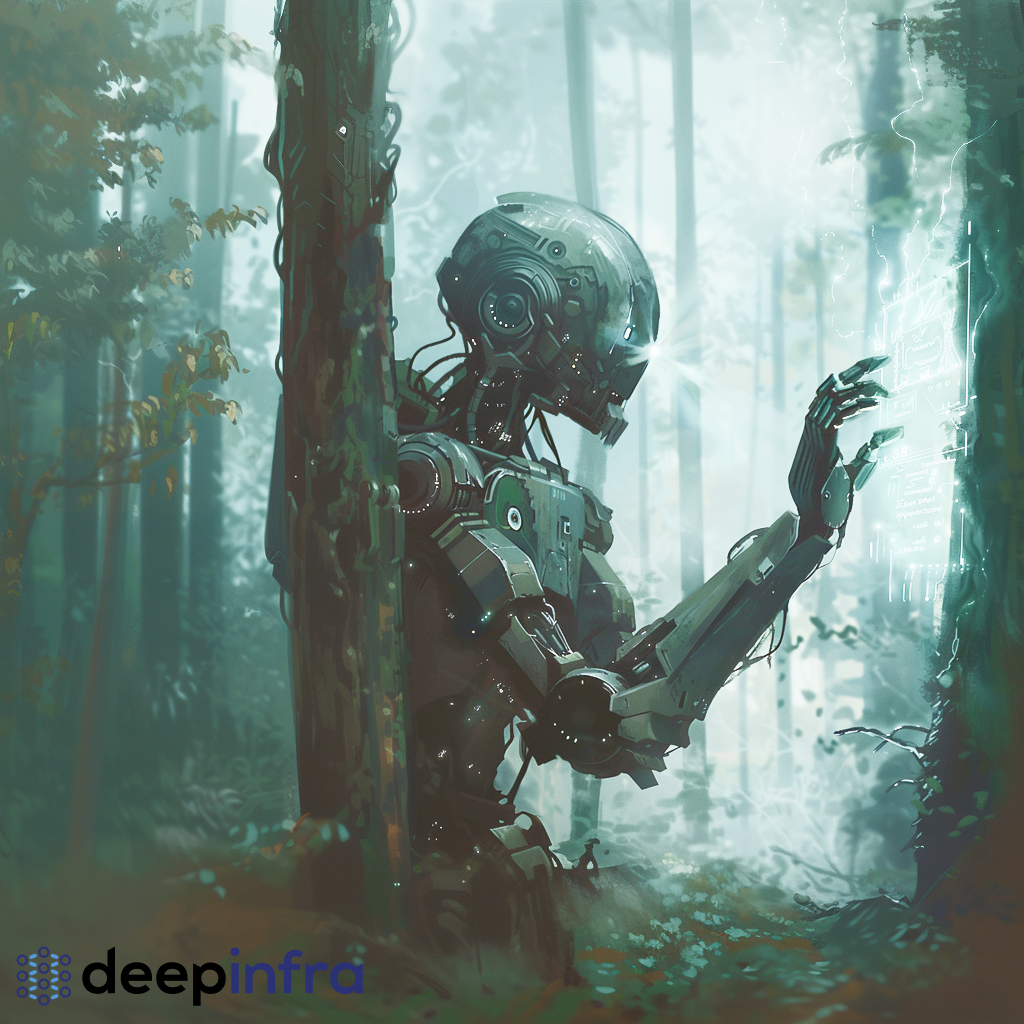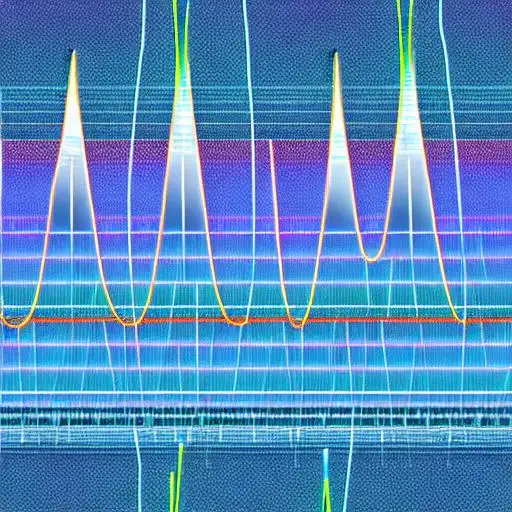FLUX.2 is live! High-fidelity image generation made simple.

AI Model Distillation Definition & Methodology
Model distillation is the art of teaching a smaller, simpler model to perform as well as a larger one. It's like training an apprentice to take over a master's work—streamlining operations with comparable performance . If you're struggling with deploying resource-heavy models, this guide will walk you through the basics, benefits, and best practices for model distillation.
What Is Model Distillation?
Model distillation is a compression technique where a smaller "student" model learns from a larger "teacher" model, enabling the student model to achieve comparable performance to the teacher model. It focuses on mimicking the teacher's outputs and captures essential knowledge while reducing size and complexity. By transferring knowledge from the teacher to the student, distillation helps preserve the performance and accuracy of the original model while significantly reducing computational and memory requirements.
The process involves training the student model on the raw data with an added objective of aligning its outputs—such as probabilities or embeddings—with the teacher's predictions. This soft-label alignment helps the student model capture subtle patterns and generalizations that raw data labels alone might not convey. As a result, model distillation is widely used for deploying AI on resource-constrained devices, like mobile phones or IoT hardware, where running large, complex models isn't practical.
How Model Distillation Works
Training the Student Model (Knowledge Transfer)
In model distillation, a large pre-trained model (teacher) is used to guide the training of a smaller model (student). A student model is trained not only on raw data but also by leveraging the teacher model’s output on the same data. The training process involves replicating the soft probabilities generated by the teacher, which provide richer information than hard labels alone. For example, a teacher might predict class probabilities like 70% cat and 30% dog, giving the student insights into the uncertainty of the decision. The teacher model is not trained during the training process.
The student is usually much smaller and computationally efficient, making it suitable for deployment on resource-constrained devices. Experiments with different architectures and hyperparameters are carried out to find the optimal student model that retains the teacher's knowledge while operating efficiently.
Evaluation and Optimization
After training, the student model must be thoroughly evaluated to make sure it performs well on the task. Compare its accuracy, precision, or recall against the teacher model to measure how effectively knowledge was transferred. While the student model may not reach the teacher's exact performance, it should achieve a level of accuracy that is acceptable for the task at hand.
If the student's performance is below expectations, consider fine-tuning the distillation process, such as adjusting the temperature parameter in the softmax layer or other hyperparameters of the student model. Additionally, test the model on real-world data to validate its robustness.
During the evaluation and optimization process, make sure to:
- Compare key performance metrics (accuracy, precision, recall) between teacher and student.
- Fine-tune hyperparameters if the student model underperforms.
- Test on diverse datasets to ensure the model generalizes well beyond the training data.
Model Distillation Pros & Cons
Model Distillation Pros
Model distillation offers significant benefits by reducing model size, improving inference speed, and lowering energy consumption, which makes it ideal for resource-constrained environments. Additionally, the student model leverages the knowledge of the teacher, and preserves key insights without the need for retraining from scratch.
| Pros | Description |
|---|---|
| Model compression | Distilled models are smaller, making them suitable for deployment on devices with limited resources. |
| Faster inference | Smaller student models lead to quicker predictions and lower latency. |
| Energy efficiency | Reduced computational needs result in less energy usage, ideal for edge devices and sustainable AI. |
| Knowledge transfer | The student model captures nuanced patterns and generalizations learned by the teacher. |
| No need for retraining | The student model can skip training from scratch, saving time and computational effort. |
Model Distillation Cons
Despite its advantages, model distillation can result in reduced accuracy and relies heavily on the quality of the teacher model.
| Cons | Description |
|---|---|
| Potential accuracy loss | The student model may lose some accuracy compared to the teacher, especially for complex tasks. |
| Dependence on teacher quality | A poorly optimized teacher model will limit the student model's performance. |
| Limited to certain architectures | Distillation may not work effectively when student and teacher architectures are vastly different. |
| Difficult to tune | Optimizing the distillation process can be challenging, requiring careful tuning of loss functions and temperatures. |
The process adds complexity with additional training steps and tuning challenges, and its effectiveness may vary depending on the model architectures involved.
How DeepInfra Supports Model Distillation
DeepInfra simplifies hosting pre-distilled AI models by providing a powerful, scalable, and serverless infrastructure tailored for real-world applications. Our platform is optimized for the unique requirements of distilled models—compact yet high-performing solutions that drive efficiency. We currently host open-source deepseek’s R1 distilled checkpoints based on Qwen 2.5 32B and Llama3 70B models.
With DeepInfra, developers can use pre-distilled student models without worrying about complex backend setups or resource constraints, so they can focus on improving their applications. One of our standout features is the dynamic adaptation to workload demands—whether hosting a model for low-latency chatbot interactions or running predictions on edge devices, our auto scaling feature maintains smooth operations. Additionally, the platform integrates seamlessly with popular machine learning frameworks for rapid and efficient deployment.
Note: While we host distilled models, we do not currently provide services to distill models.
Other key features of DeepInfra include:
- Scalable infrastructure. Automatically adjusts resources to meet the performance needs of your model.
- Serverless deployment. Eliminates the need to manage servers, simplifying implementation and reducing overhead.
- Optimized for compact models. Provides high-speed inference and low-latency performance for distilled models.
- Cost-Efficient. Minimizes operational costs by tailoring resource usage to compact models' requirements.
Make AI Faster and More Efficient with Model Distillation
By transferring knowledge from a larger teacher model to a compact student model, model distillation makes it possible to run advanced AI applications on devices with limited computational power.
Whether you're looking to reduce model size, speed up inference, or lower energy consumption, model distillation provides a powerful tool to achieve these goals without compromising on quality.
As with any technique, the key to success lies in careful implementation—training a robust teacher model, fine-tuning the student, and validating results. Platforms like DeepInfra further simplify the process, offering scalable and cost-effective solutions for deploying distilled models in real-world applications.
With model distillation, you're simplifying AI and making it accessible, practical, and ready for the challenges of modern deployment. Whether for edge devices, mobile apps, or cloud systems, this approach empowers developers to deliver smarter, more efficient AI solutions.
FAQs
What is model distillation? Model distillation is a process where a smaller model learns from a larger one, retaining its knowledge while reducing size and complexity.
Why is model distillation important? Model distillation is important because it allows developers to deploy efficient AI models in resource-constrained environments without sacrificing much accuracy.
How does model distillation improve scalability? By reducing model size and computational requirements, model distillation makes AI more suitable for large-scale or edge deployments.
What are the benefits of model distillation? The benefits of model distillation include:
- Smaller, faster models.
- Lower computational costs.
- Easier deployment on limited hardware.
- Improved scalability.
Can any AI model be distilled? Yes, most models can be distilled, though results depend on task complexity and data quality.
How does temperature scaling affect model distillation? Temperature scaling softens the teacher model's predictions, and make it easier for the student model to learn nuanced patterns.
What metrics should be used to evaluate distilled models? Use task-specific metrics like accuracy or F1 score, and compare these against the teacher model's performance.
Can model distillation work for multimodal tasks? Yes, though it requires adapting distillation techniques to handle both text and image data effectively.
 Introducing Tool Calling with LangChain, Search the Web with Tavily and Tool Calling AgentsIn this blog post, we will query for the details of a recently released expansion pack for Elden Ring, a critically acclaimed game released in 2022, using the Tavily tool with the ChatDeepInfra model.
Using this boilerplate, one can automate the process of searching for information with well-writt...
Introducing Tool Calling with LangChain, Search the Web with Tavily and Tool Calling AgentsIn this blog post, we will query for the details of a recently released expansion pack for Elden Ring, a critically acclaimed game released in 2022, using the Tavily tool with the ChatDeepInfra model.
Using this boilerplate, one can automate the process of searching for information with well-writt... How to OpenAI Whisper with per-sentence and per-word timestamp segmentation using DeepInfraWhisper is a Speech-To-Text model from OpenAI.
How to OpenAI Whisper with per-sentence and per-word timestamp segmentation using DeepInfraWhisper is a Speech-To-Text model from OpenAI. Building a Voice Assistant with Whisper, LLM, and TTSLearn how to create a voice assistant using Whisper for speech recognition, LLM for conversation, and TTS for text-to-speech.
Building a Voice Assistant with Whisper, LLM, and TTSLearn how to create a voice assistant using Whisper for speech recognition, LLM for conversation, and TTS for text-to-speech.
© 2025 Deep Infra. All rights reserved.

